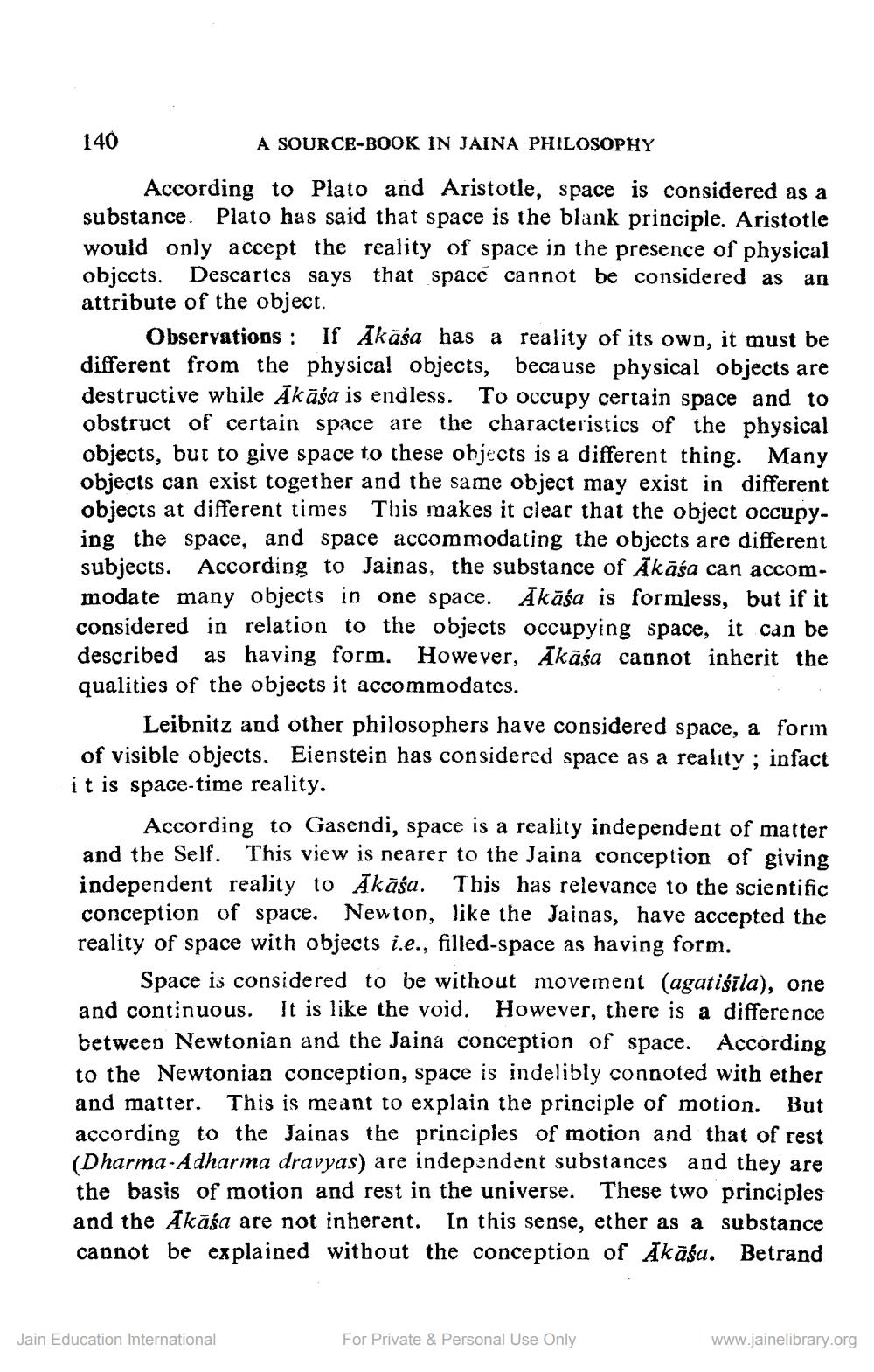________________
140
A SOURCE-BOOK IN JAINA PHILOSOPHY
According to Plato and Aristotle, space is considered as a substance. Plato has said that space is the blank principle. Aristotle would only accept the reality of space in the presence of physical objects. Descartes says that space cannot be considered as an attribute of the object.
Observations: If Akāśa has a reality of its own, it must be different from the physical objects, because physical objects are destructive while Ākāśa is endless. To occupy certain space and to obstruct of certain space are the characteristics of the physical objects, but to give space to these objects is a different thing. Many objects can exist together and the same object may exist in d objects at different times This makes it clear that the object occ
occupying the space, and space accommodating the objects are different subjects. According to Jainas, the substance of Ākāśa can accommodate many objects in one space. Ākāśa is formless, but if it considered in relation to the objects occupying space, it can be described as having form. However, Akāśa cannot inherit the qualities of the objects it accommodates.
Leibnitz and other philosophers have considered space, a form of visible objects. Eienstein has considered space as a reality ; infact it is space-time reality.
According to Gasendi, space is a reality independent of matter and the Self. This view is nearer to the Jaina conception of giving independent reality to Akāśa. This has relevance to the scientific conception of space. Newton, like the Jainas, have accepted the reality of space with objects i.e., filled-space as having form.
Space is considered to be without movement (agatiśīla), one and continuous. It is like the void. However, there is a difference between Newtonian and the Jaina conception of space. According to the Newtonian conception, space is indelibly connoted with ether and matter. This is meant to explain the principle of motion. But according to the Jainas the principles of motion and that of rest (Dharma-Adharina dravyas) are independent substances and they are the basis of motion and rest in the universe. These two principles and the Akāśa are not inherent. In this sense, ether as a substance cannot be explained without the conception of Akāśa. Betrand
Jain Education International
For Private & Personal Use Only
www.jainelibrary.org




